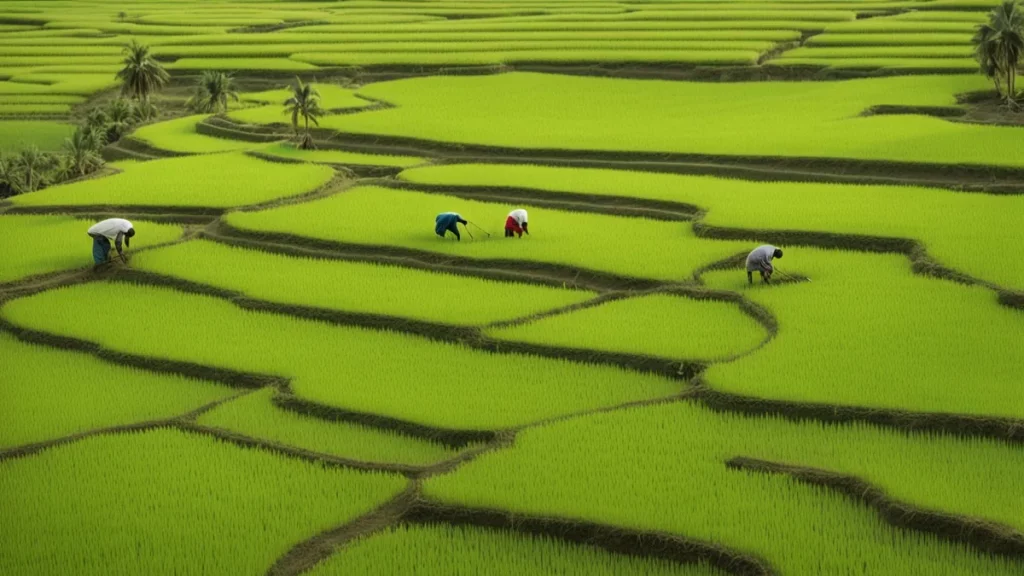Tags
Rice Cultivation in Africa Fuels Methane Emissions; FAO Reports Decline in Food Prices

Rice farming in sub-Saharan Africa has significantly contributed to the rise in atmospheric methane levels, according to a study by Harvard University engineers and atmospheric scientists.
Collaborating with a researcher from the California Institute of Technology’s Jet Propulsion Laboratory, the study recalculated methane emissions from increased rice production in the region, which has doubled from 2008 to 2018.
Methane, a potent greenhouse gas with more heat-trapping ability than carbon dioxide, is released in large quantities during rice cultivation through irrigation, flooding paddies, burning fields, and harvesting.
Rising Methane Emissions
The growth of rice farming in Africa is responsible for 31% of the continent’s methane emissions increase from 2006 to 2017 and 7% of the global rise in methane emissions over the same period.
These findings were published in Nature Climate Change. Dr. Ayodele Otaiku, a Climate Smart Agriculture expert, advocates for the adoption of regenerative agricultural practices and the use of Aratibiotech climate solutions to mitigate methane production from rice farming.
He emphasizes that these practices improve environmental, societal, and economic outcomes and should be adapted to specific farm ecosystems.
FAO Reports Decline in Food Prices
The FAO Food Price Index reported a decrease in world food commodity prices in December, with a sharp drop in international sugar quotations. Despite concerns over El Niño’s impact on rice production and India’s export restrictions, the index for 2023 was 13.7% lower than the previous year.
The FAO Vegetable Oil Price Index decreased, reflecting lower demand, while the FAO Sugar Price Index fell due to increased production in Brazil and decreased sugarcane use for ethanol in India.
Impact on Global Food Security
The FAO Meat Price Index also declined, with the exception of ovine meat prices, which rose ahead of holidays. Conversely, the FAO Dairy Price Index rose, led by higher prices for butter and cheese. Despite these fluctuations in the global food market, more than 333 million people faced acute levels of food insecurity in 2023.
The relief from the decline in food commodity prices has yet to reach the real world of shopkeepers and families. The effects of dry weather, flooding, and the El Niño phenomenon on food production, as well as the impacts of conflicts like the war in Ukraine, continue to challenge food trade and inflation.
https://bnnbreaking.com/breaking-news/climate-environment/rice-cultivation-in-africa-fuels-methane-emissions-fao-reports-decline-in-food-prices/Published Date: January 8, 2024






